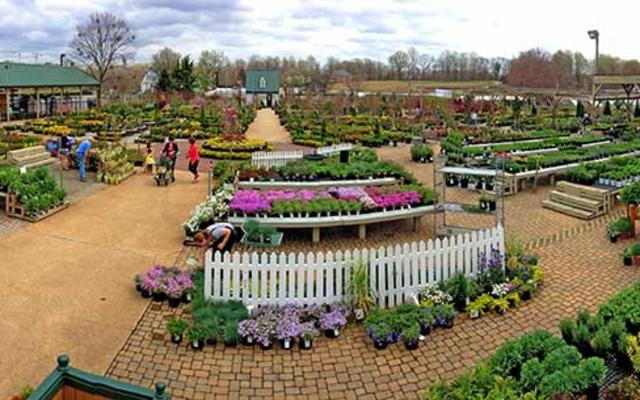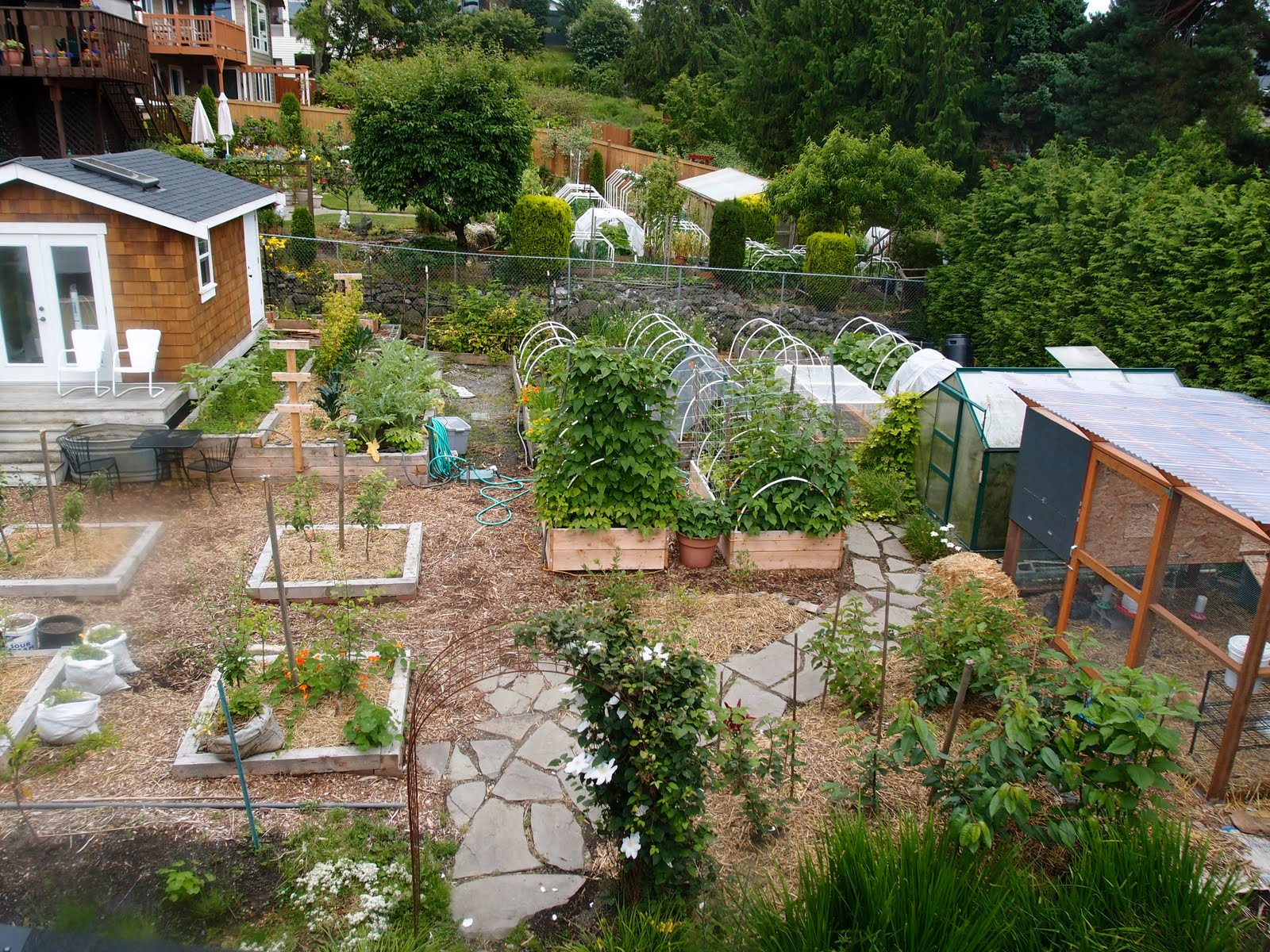Learn Exactly How to Cultivate a Flourishing Gardening Setting for All Ability Degrees
Producing a flourishing garden is a complex undertaking that can be accepted by people at any kind of skill level. By examining key parts such as dirt health and wellness, suitable plant selection, and seasonal treatment regimens, one can establish a sustainable horticulture method that produces satisfying outcomes. Comprehending exactly how to assess and boost your garden space lays the foundation for success. The ins and outs of implementing these concepts typically present difficulties that can prevent even the most passionate beginner. What approaches can be utilized to get over these challenges and foster a genuinely thriving setting?
Comprehending Your Yard Room
In the realm of gardening, recognizing your garden space is vital to growing a flourishing landscape (Homestead Gardening). The very first action in this endeavor includes examining the details characteristics of your plot. Aspects such as dirt composition, sunlight exposure, and drain play essential roles in identifying the suitability of your yard for numerous kinds of plants
Begin by performing a soil test to analyze pH degrees and nutrient web content, which will certainly inform any type of needed modifications. In addition, observe how much sunlight your space receives throughout the day. Different plants have varying light requirements; some thrive completely sun, while others choose full or partial shade.

Finally, assess the offered space and plan accordingly. This includes taking into consideration plant elevations and infected ensure adequate area for development without congestion. By acquiring an extensive understanding of your garden space, you established the structure for a successful gardening experience.
Selecting the Right Plant Kingdoms
Selecting the right plants for your garden requires careful factor to consider of numerous aspects, including environment, dirt conditions, and personal choices. Begin by evaluating your local environment, as certain plants flourish specifically temperature level arrays and weather condition patterns. For example, exotic plants may not survive in cooler regions, while durable perennials can hold up against severe winter seasons.

Consider your individual preferences, consisting of aesthetic allure and maintenance degrees. Choose whether you favor dynamic blossoms, lush vegetation, or edible crops. Additionally, variable in the time and initiative you are willing to buy plant treatment, as some varieties require even more interest than others.
Last but not least, consider the garden's design and light direct exposure. Sunlight patterns throughout the day will affect your choices-- some plants need complete sun, while others flourish in color. By attentively evaluating these components, you can create a unified and productive yard tailored to your environment and preferences.
Vital Horticulture Devices
A well-equipped gardener can considerably improve their horticulture experience and results. Crucial horticulture devices are basic to growing an effective yard, no matter of ability degree. Initially, a tough spade is important for digging and turning soil, while a trowel allows for precise planting and transplanting of smaller sized plants.
Pruning shears are vital for keeping plant wellness by getting rid of thick or dead branches, promoting better air circulation and development. In addition, a hand rake is beneficial for removing debris and aerating the dirt, making sure ideal conditions for plant origins.
Gardening handwear covers safeguard hands from sores, thorns, and chemicals, making them a vital accessory. A watering can or tube with a flexible nozzle guarantees that plants receive ample wetness without overwatering.
Last but not least, take into consideration spending in a durable wheelbarrow for delivering dirt, plants, and tools around the yard effectively. By constructing a top quality toolkit that consists of these necessary products, gardeners can take on numerous jobs with confidence and convenience, leading the way for a growing gardening setting. Keep in mind, the right devices not only boost efficiency yet also boost the overall satisfaction of the gardening process.
Dirt Preparation and Upkeep
Quality dirt is the foundation of a successful garden, making appropriate prep work web and upkeep essential for healthy and balanced plant development. Based on the examination results, amendments can be made to enhance useful source soil problems for details plant requirements.
Incorporating raw material, such as garden compost or well-rotted manure, is crucial for improving soil structure and fertility. This not only improves nutrition accessibility yet additionally advertises beneficial microbial activity. Additionally, proper drain is crucial; heavy clay soils may need the addition of sand or perlite to enhance aeration.
Routine maintenance of soil health includes mulching, which conserves moisture and suppresses weeds. Moreover, rotating crops annually aids prevent nutrient deficiency and lowers parasite and condition threats. It is additionally vital to stay clear of over-tilling, which can interfere with soil structure and harm beneficial organisms.
Inevitably, a constant commitment to soil prep work and maintenance will bring about a prospering garden, ensuring that plants obtain the crucial nutrients they need for robust development and efficiency.
Seasonal Care and Monitoring

In spring, focus on planting brand-new seeds and seedlings, while additionally carrying out dirt tests to modify nutrient deficiencies. Routinely examine for illness and pests, as these can multiply with the warming weather. Summertime needs constant watering and mulching to preserve wetness, in addition to pruning for far better air circulation.
As fall approaches, it's time to prepare the garden for inactivity. This includes gathering plants, cleaning up particles, and applying a layer of mulch to shield plant roots from frost. Think about growing cover crops to enhance the dirt during the winter season.
Last but not least, winter season treatment is crucial. Check frameworks like greenhouses for damage and guarantee appropriate insulation for delicate plants. Routinely keep an eye on for parasites that may seek sanctuary inside. By adjusting your gardening methods to the seasonal cycles, you can promote a prospering environment that supports plant health and wellness year-round.
Conclusion
Finally, cultivating a successful garden needs a detailed understanding of crucial concepts such as dirt make-up, sunshine direct exposure, and ideal plant option. Implementing effective dirt prep work and upkeep strategies, in addition to making use of the right devices, promotes an ideal growing environment. Regular seasonal care and monitoring techniques better boost plant health and wellness and efficiency. By adhering to these foundational standards, people in any way skill levels can achieve a prospering yard that adds to both aesthetic enjoyment and ecological sustainability.
Picking the right plants for your garden requires mindful consideration of numerous elements, consisting of environment, dirt conditions, and individual preferences. Conduct a dirt test to determine pH degrees and nutrient web content, which will lead you in choosing plants that will certainly grow in your garden.Finally, consider spending in a sturdy wheelbarrow for transporting soil, plants, and devices around the garden successfully.Quality soil is the structure of a successful garden, making correct preparation and upkeep essential for healthy and balanced plant growth. Homestead Gardening.In final thought, growing a successful yard calls for an extensive understanding of crucial principles such as dirt composition, sunlight direct exposure, and appropriate plant choice